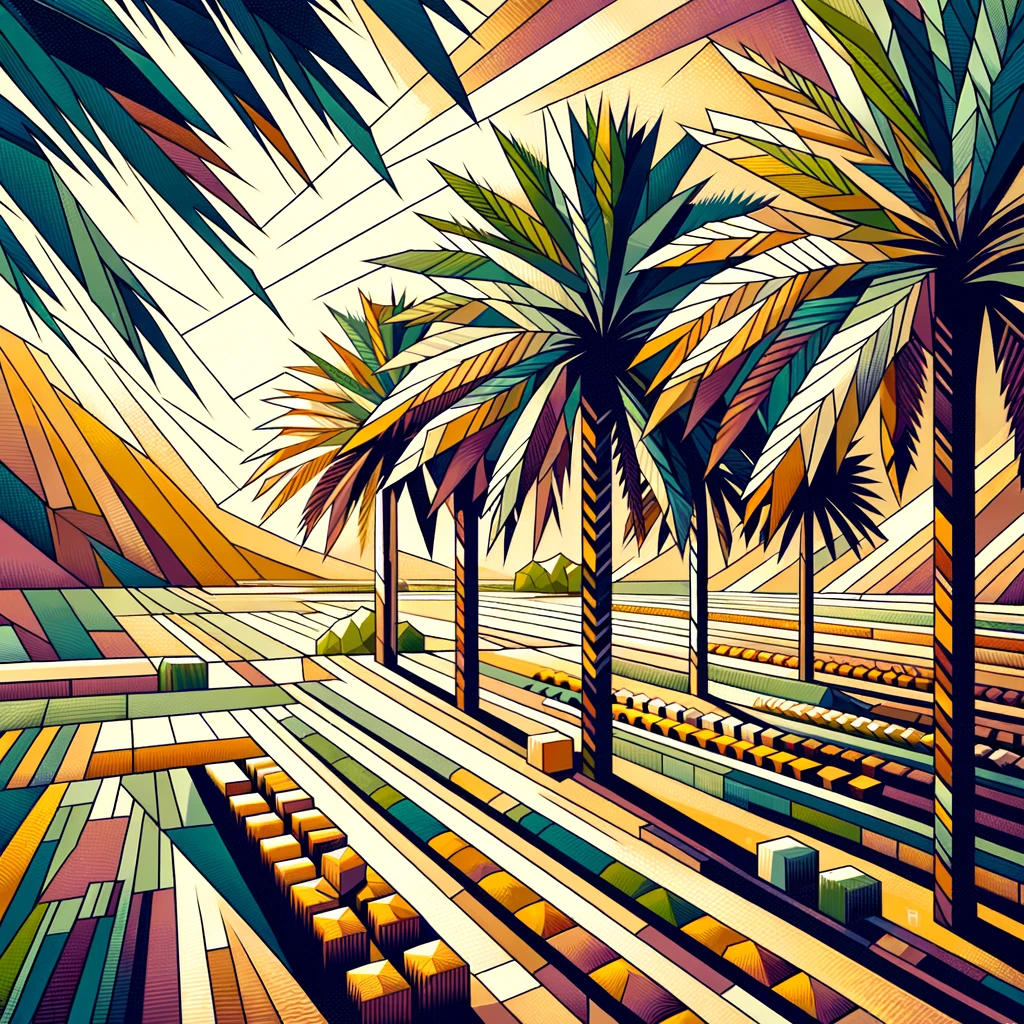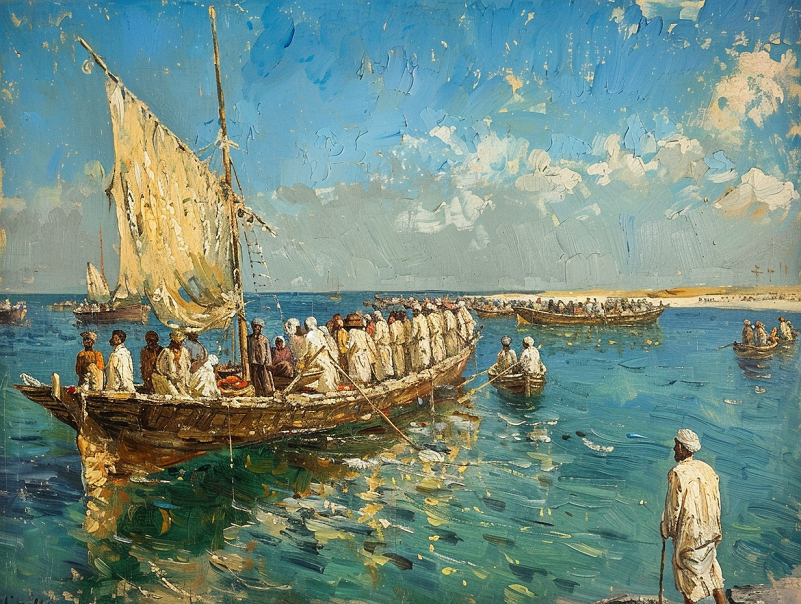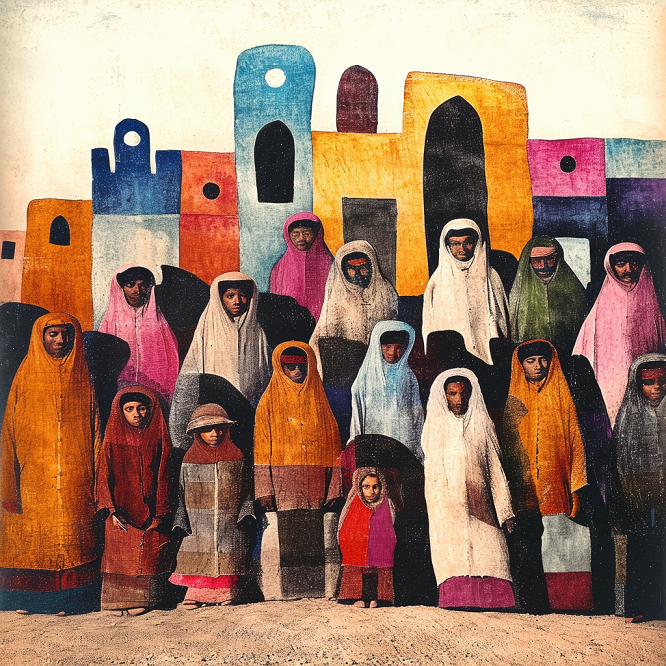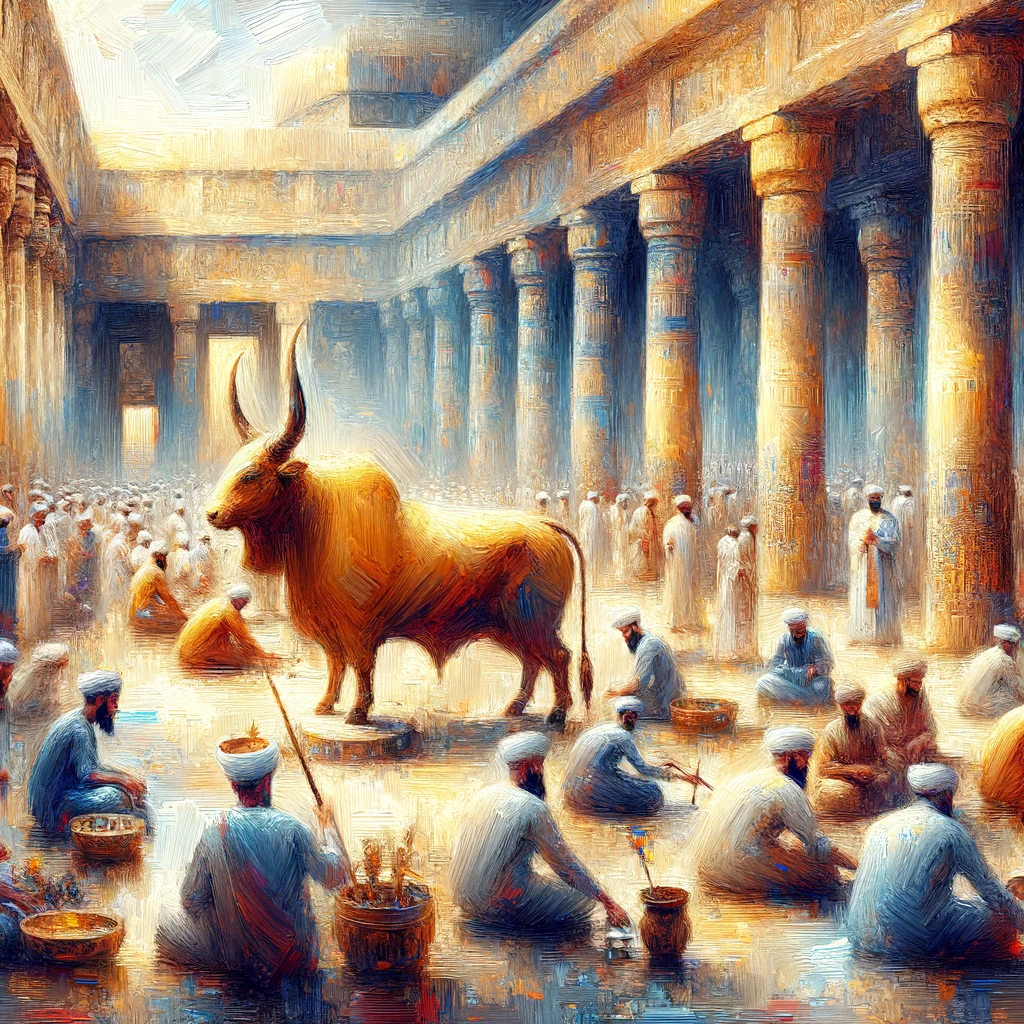The ancient name “Awal” holds a seminal place in the rich tapestry of Bahrain’s history, an island country nestled in the Arabian Peninsula. This term, resonating with the echoes of a past steeped in religious reverence and strategic mercantile activities, served as the bedrock of Bahrain’s identity for approximately eight centuries. Before the advent of Islam, Awal was not only a geographical entity but also a spiritual one, derived from the worship of a deity symbolised by the ox’s head. This essay explores the era when Bahrain was known as Awal, its divine heritage, and its evolution through various administrative names such as Mishmahig and Tylos by the Ancient Greeks. It delves into the religious, cultural, and trade dynamics that shaped the island, the foreign influences it absorbed, and the legacy of Awal that continues to permeate Bahrain’s modern identity. Key figures, places, and tribes, such as the Dilmun civilization and the influence of Mesopotamian, Greek, and Persian cultures, will be highlighted to provide a comprehensive understanding of Awal’s place in history.
Awal’s Divine Heritage
The ancient name of Bahrain, “Awal,” is deeply entrenched in the island’s pre-Islamic religious fabric, symbolising not just a place but also a pantheon of beliefs centred around an ox-headed deity. This divine figure, Awal Premi, was revered by the inhabitants for centuries, embodying the strength and fertility that the ox represented in agrarian societies. The name “Awal” itself, with roots in Arabic terms like “ʼawwal” meaning ‘first’ or ‘prime’, reflects the primordial and esteemed status this deity held within the local cosmology.
The ox, a symbol of endurance and sustenance, was an apt representation for the island, known for its lush landscapes and natural springs that sustained ancient civilizations. The worship of Awal Premi, therefore, was not merely religious practice but a celebration of the island’s natural bounty and its pivotal role in sustaining the community’s life. Archaeological findings, including statuettes and inscriptions, provide a glimpse into this veneration, showcasing how the ox motif was intricately woven into the fabric of daily and spiritual life in Awal.

Awal and Its Administrative Names
Transitioning through names and eras, Bahrain’s identity as Awal was complemented and eventually overshadowed by names such as Mishmahig and Tylos. Mishmahig, referring to the island’s administrative name before Islam, encapsulates a period of rich cultural amalgamation and economic prosperity. The Ancient Greeks, recognising the strategic and cultural significance of the island, bestowed upon it the name Tylos. This nomenclature, potentially derived from the Greek ṭiwal, meaning ‘rope with which the feet of draught-cattle are tied together’, echoes the cattle representation of Awal’s deity and further confirms the ancient connection between the island’s divine worship and its agrarian roots.
These transitions in names reflect the broader shifts in Bahrain’s political, cultural, and economic landscapes, mirroring the island’s capacity to adapt and evolve while maintaining a link to its divine and primordial past. The layers of Bahrain’s ancient names not only tell a story of religious reverence and agricultural dependence but also of a society that stood at the crossroads of civilizational exchanges and influences, shaping the mosaic of its identity through the ages.
The Era of Awal
The chronology of Awal spans several centuries, marking a period of significant cultural and economic development. This era is characterised by Bahrain’s emergence as a vital trade hub, facilitating exchanges between ancient civilisations such as Mesopotamia and the Indus Valley. The strategic location of Awal, coupled with its rich natural resources, particularly pearls and palm trees, played a pivotal role in establishing its reputation as a prosperous trading centre. Artifacts recovered from various archaeological sites across the island, including seal impressions and pottery, bear testimony to the extensive trade networks that Awal was part of. These items not only served as commodities but also as cultural ambassadors, carrying with them the essence of Awal’s society and its interactions with distant lands.
Religious Practices and Deities
Central to the era of Awal was the worship of the ox-headed deity, Awal Premi, reflecting the community’s deep spiritual connection with agriculture and fertility. Temples and ritual sites dedicated to this and other deities dotted the landscape, serving as focal points for the religious life of the island. The architecture of these temples, often elaborate and strategically located near natural water sources, underscores the importance of religion in daily life and the sophisticated understanding of engineering and artistry of Awal’s inhabitants. Inscriptions and religious artefacts found within these sacred spaces offer a glimpse into the ritualistic practices and theological beliefs of the time, illustrating a society where the divine was seamlessly integrated into the fabric of everyday existence.
The era of Awal, thus, was not merely a time of economic prosperity but also of rich cultural and religious expression. The legacy of this period, marked by the interplay of trade, agriculture, and worship, laid the foundational stones for Bahrain’s historical and cultural identity, echoing through the annals of time to inform the modern narrative of the nation.
Syncretism and Transformation
The island of Awal, with its strategic geopolitical position and thriving economy, attracted the attention of several dominant powers throughout history, each leaving an indelible mark on its cultural and administrative landscape. The Assyrian, Babylonian, and later Persian empires extended their influence over Awal, introducing a complex layer of foreign administrative practices, cultural motifs, and religious beliefs. This period of foreign dominion was characterised by a dynamic process of syncretism, where the indigenous traditions of Awal were interwoven with those of its conquerors, leading to a rich tapestry of cultural and religious practices.
The introduction of new deities into the local pantheon, alongside Awal Premi, and the adoption of foreign administrative systems highlight the island’s capacity for cultural assimilation and adaptation. This blend of indigenous and foreign elements facilitated the emergence of a unique societal structure in Awal, capable of accommodating diverse cultural influences while maintaining a distinct identity.

The Name Changes and Their Implications
The transition of Bahrain’s name from Awal to Mishmahig and subsequently to Tylos under Greek influence illustrates the fluid nature of its cultural and political identity. Each name change signifies a shift in the island’s external relations and internal dynamics, reflecting the changing tides of dominion and influence. The Greek name Tylos, possibly linked to the term ṭiwal, suggests a continuity of the cattle motif in the island’s cultural and religious iconography, further confirming the deep-rooted significance of the ox-headed deity.
These name changes, far from erasing the island’s past, contributed to a layered historical narrative, encapsulating the complexities of cultural transmission and adaptation. The influence of foreign powers, while altering the island’s administrative and cultural landscape, also enriched its heritage, creating a multifaceted historical identity that continued to evolve through subsequent periods.
The impact of these foreign dominions on Awal was profound, reshaping its societal norms, religious practices, and economic strategies. However, the core identity of Awal, rooted in its ancient traditions and worship of Awal Premi, remained a constant thread, weaving through the fabric of its history and maintaining a link to its primordial past.
Legacy of Awal in Modern Bahrain
The legacy of Awal continues to resonate in modern Bahrain, where ancient traditions and religious practices have been preserved and adapted to form an integral part of the national identity. Despite the passage of centuries and the transformations induced by foreign influences, the cultural DNA of Awal remains embedded in the Bahraini way of life. The ancient craft of pearl diving, once the backbone of Awal’s economy, persists as a symbol of the island’s enduring connection to its maritime heritage. Similarly, the cultivation of dates, a practice that dates back to the Dilmun era, continues to thrive, linking present-day Bahrain with its agrarian past.
Religious practices and festivals, though transformed over the millennia, still bear traces of the island’s pre-Islamic spiritual landscape. The reverence for natural elements, such as water and palm trees, echoes the ancient worship of fertility deities and reflects a continuity of belief in the sanctity of the natural world. Modern religious observances, while predominantly Islamic, are imbued with a sense of communal solidarity and respect for the island’s diverse religious heritage, a testament to the syncretic evolution of Bahrain’s spiritual identity.
Historical Identity and National Heritage
The ancient name Awal and its associated deity, Awal Premi, have transcended their origins to become symbols of Bahrain’s rich historical narrative and cultural resilience. Efforts to preserve and celebrate this heritage are evident in the island’s museums, archaeological sites, and educational initiatives, which aim to foster a deep understanding and appreciation of Bahrain’s ancient past. The UNESCO World Heritage Sites, such as the Bahrain Fort (Qal’at al-Bahrain) and the Pearling Path, serve as tangible links to the island’s historical epochs, offering insights into the lives of its ancient inhabitants.
The narrative of Awal, with its themes of adaptability, cultural synthesis, and enduring legacy, continues to inspire a sense of pride and identity among Bahrainis. It serves as a reminder of the island’s historical significance as a centre of trade, culture, and spirituality, shaping its present and guiding its future. The legacy of Awal, preserved in the collective memory and the physical landscape of Bahrain, stands as a testament to the island’s rich heritage and its ongoing journey through the corridors of time.

Conclusion
The historical tapestry of Bahrain, woven through centuries of trade, culture, and spirituality, finds its roots deeply embedded in the era of Awal. This ancient period, marked by the reverence for a deity symbolised by the ox, laid the foundational stones for Bahrain’s rich and multifaceted identity. As Bahrain continues to stride forward, the legacy of Awal serves as both anchor and compass, guiding the nation towards a future that respects and reflects its historical depth.

